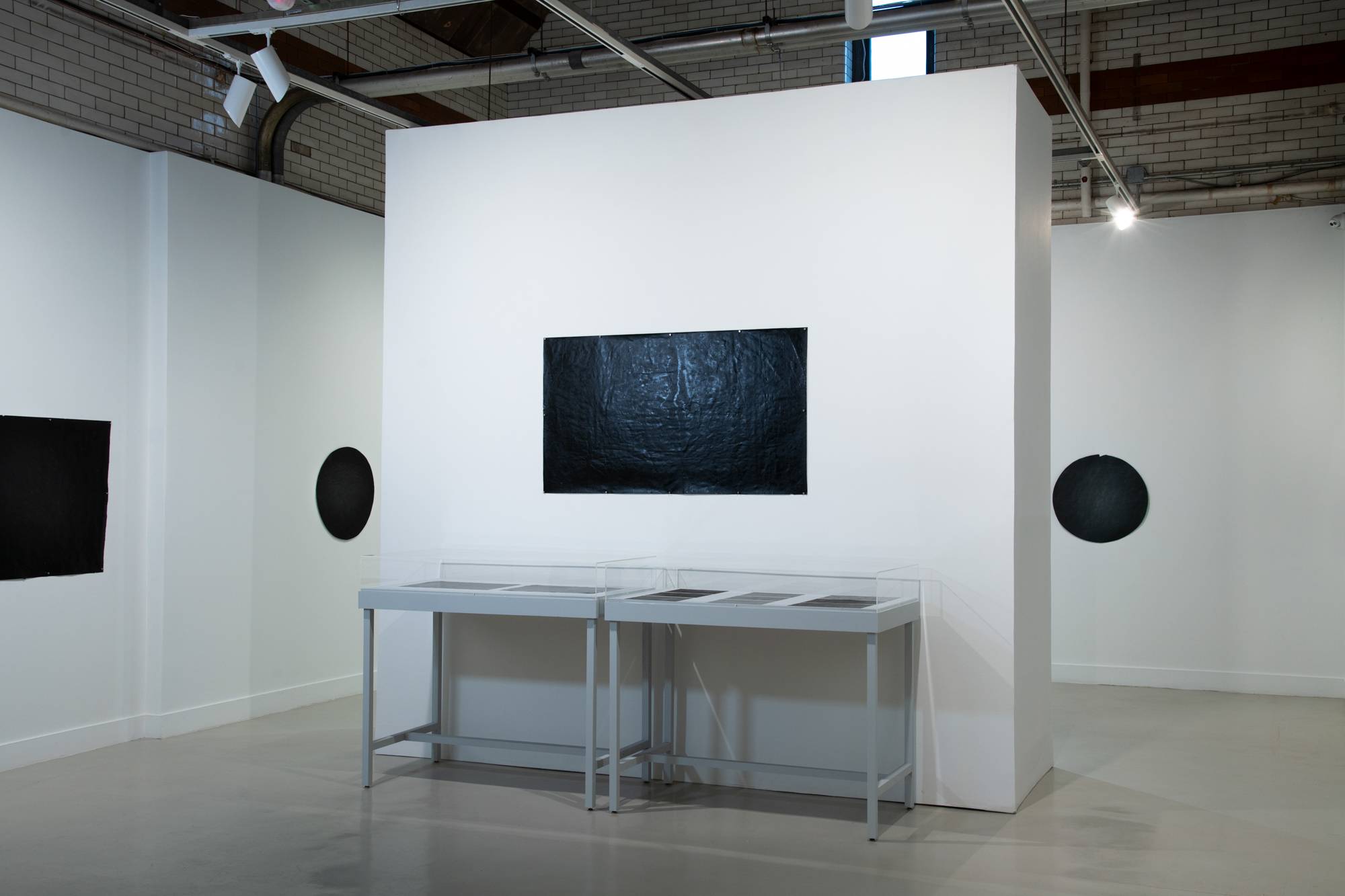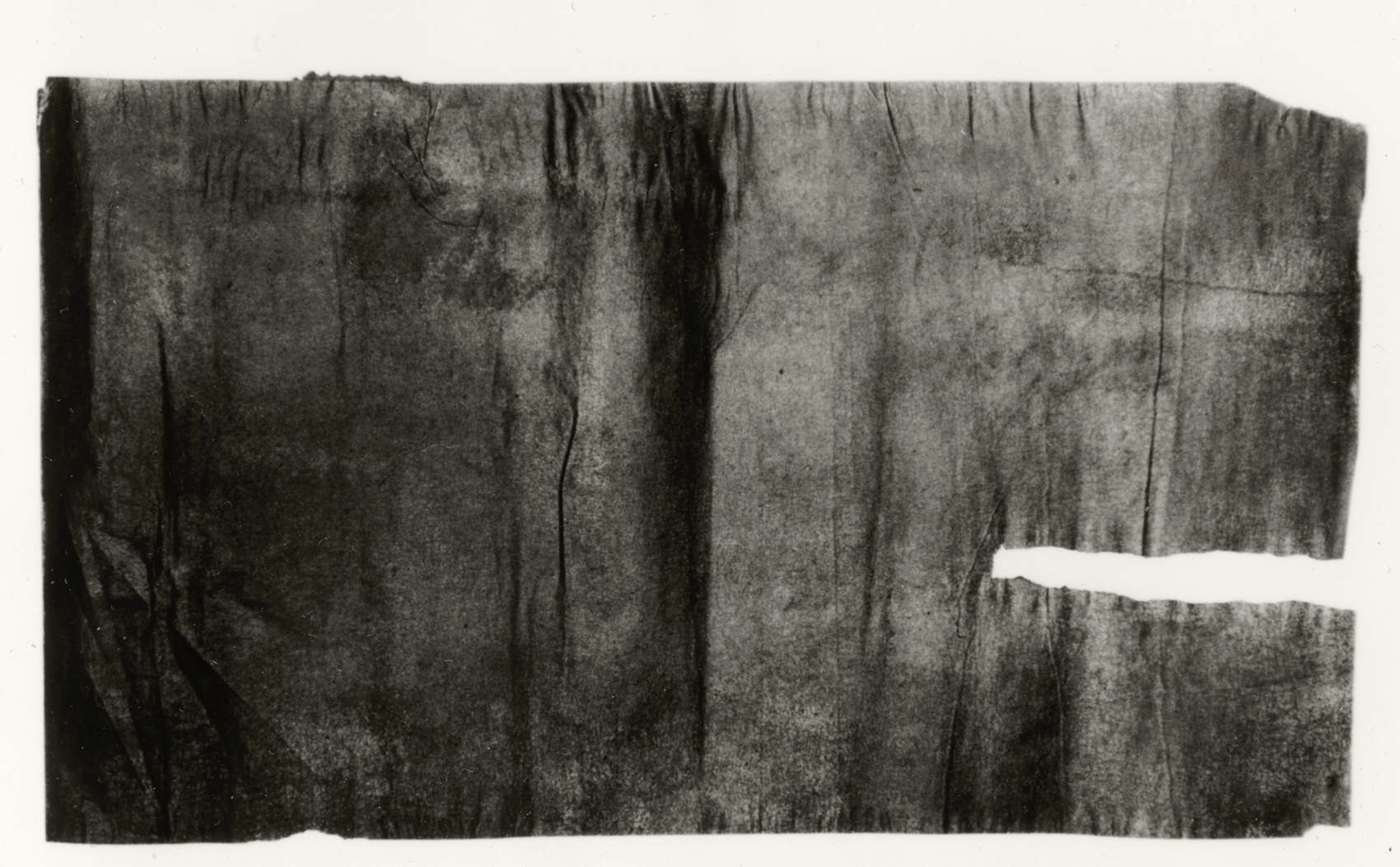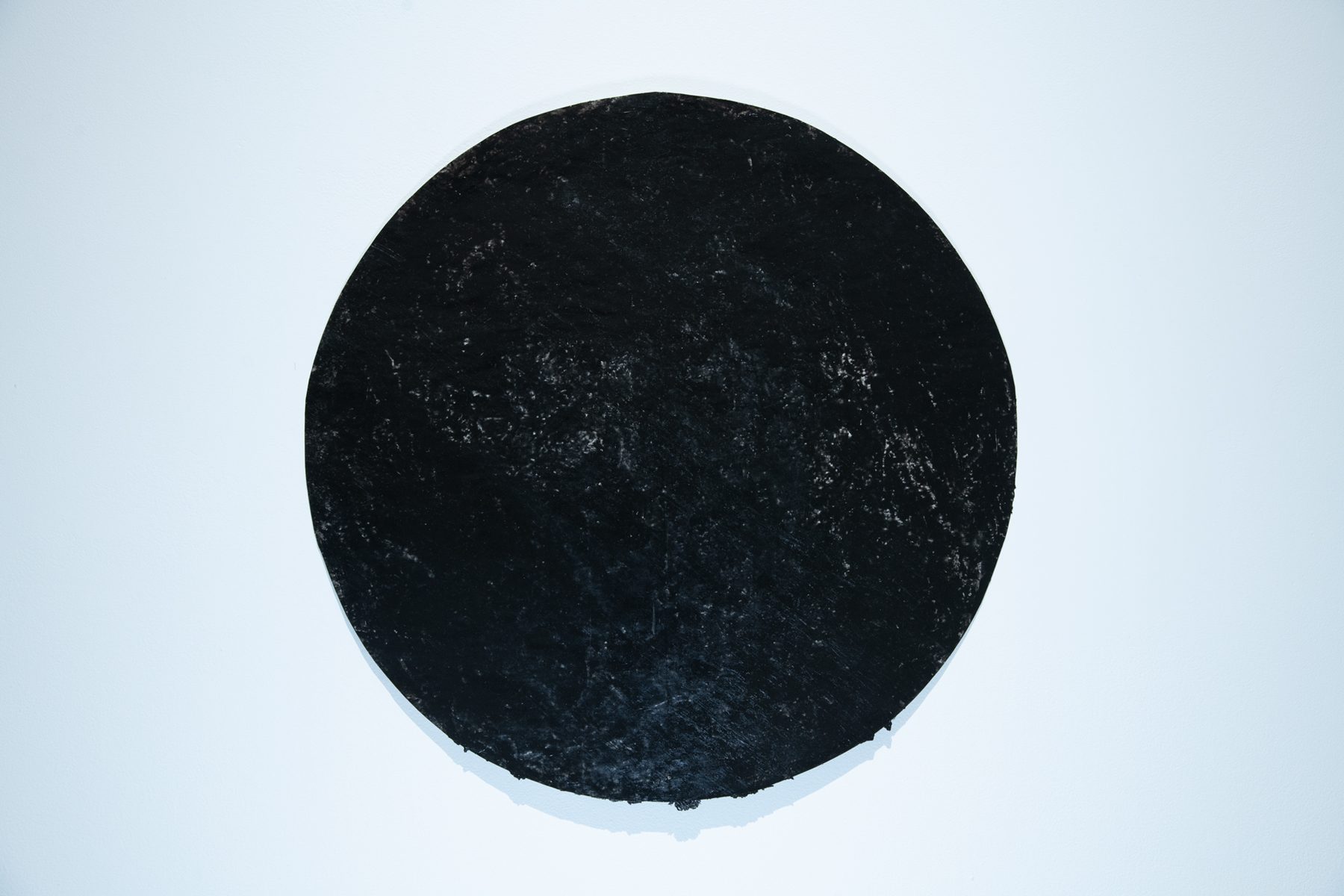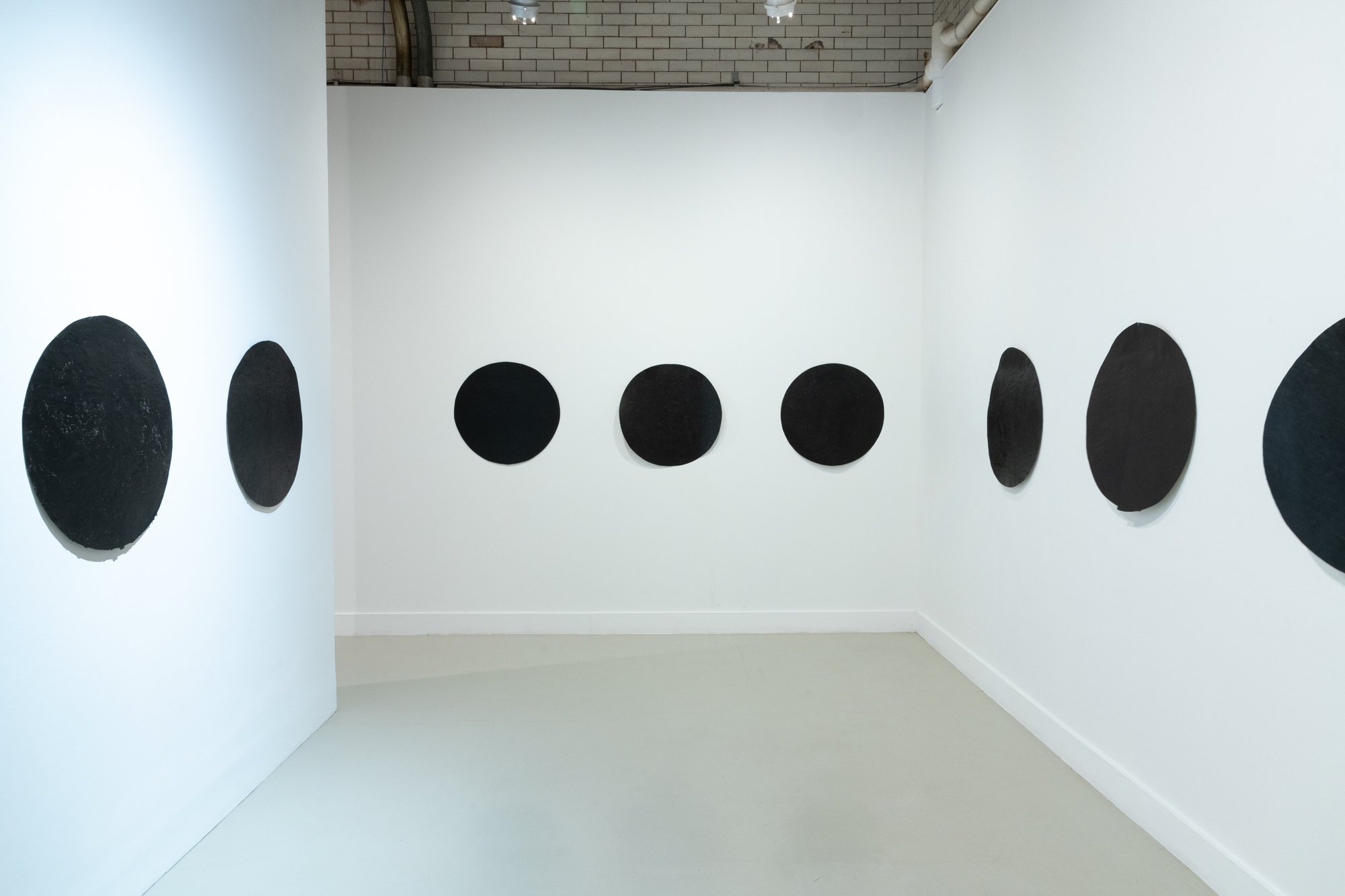June 13 – September 17, 2023
Spruance Gallery
Arcadia Exhibitions is pleased to present “Quentin Morris: Works on Paper.” The exhibition will be on view in Spruance Gallery from June 13 through September 17, 2023.
This exhibition of drawings and paintings on paper by Philadelphia-based artist Quentin Morris (b. 1945) features 37 examples from a five-decade practice dedicated to the production of monochromatic works. Executed in a range of black mediums on a variety paper of supports, these previously unexhibited drawings and paintings were selected from the artist’s studio and date from 1977 to 2013.
Morris began his exploration of the color black while he was a student at the Pennsylvania Academy of the Fine Arts in the early 1960s during the height of the Civil Rights Movement. His intention, as articulated in a written statement to which he has remained committed since that time, is “to present black’s intrinsically enigmatic beauty and infinite depth; to relentlessly refute all negative cultural mythologies about the color, and ultimately to create work that innately expresses the all-encompassing spirituality of life.”
Quentin Morris is represented by Larry Becker Contemporary Art, Philadelphia and Blum & Poe, Tokyo, Los Angeles, and New York.

Installation view, "Quentin Morris: Works on Paper," Spruance Gallery, photo: Sam Fritch
Morris’s unwavering dedication to the black monochrome positions his work at a singular juncture in the evolution of this form of abstraction. With roots in early Modernism—the paintings of Kazimir Malevich in particular—as well as in Asian art, this legacy has endured due to its capacity to embrace tensions between the transcendental/spiritual and the formal/material while also engaging questions of perception and cultural determination. These are embodied not only by the rigor of Morris’s lifelong commitment to his project but also by his identity as an African-American and a devout practitioner of Nicheren Shoshu Buddhism, followers of which chant the phrase “Nam-Myoho-Renge-Kyo.” When repeatedly voiced, these Japanese words, which mean “Devotion to the Mystic Law of the Lotus Sutra,” facilitate concentration in meditation in a manner that is analogous to viewing solo exhibitions of Morris’s work.
The constraints that Morris has established for his project paradoxically ensure its incisive focus as well as its expansive openness to nuance and variety, options that include his choice of primary supports—canvas and paper. Morris’s production of canvases has generally been confined to rectilinear and circular formats that evolved from his early, pre-stretched canvases (30 x 24 inches) to unstretched six-foot squares and circular canvases with diameters of six and ten feet. His works on paper, however, are executed within a much more varied range of formats that have advanced his investigation in ways that foreground its embrace of chance and accident, as well as its resourcefulness.
The scale of these paintings and drawings ranges from letter-size sheets to the nearly 14-feet horizontal, scroll-like work from 1977, one of the earliest works in the exhibition. This painting, along with several other examples on brown wrapping paper, demonstrate a capacity for boldness while also speaking to the fragility of their paper supports, the rough edges of which are rendered even more vulnerable by their presentation. Morris’s preference for hinging these works to the wall without frames ensures that viewers have direct access to their surfaces while making the works extremely reactive to the site of their display. Their textures absorb and reflect light in volatile ways. Surfaces that appear glossy from one angle can read as matte from another.

Quentin Morris, Untitled, (Aug) 1987, ink on torn paper, 24 1/2 X 42 1/2. Photograph by Ditta Baron Hoeber
All of the drawings in the exhibition are presented in two vitrines, some of which were executed on printed flyers and newsletters mailed to Morris’s home. (Close inspection will reveal the presence of a mailing label adhered to a 15″ x 21″ graphite work from 1987.) The machine-cut edges of these sheets are in sharp contrast with the torn contours of the larger paintings on brown paper, which, in some instances, evoke fragments and artifacts.
Morris’s canvases have generally been executed using a mixture of silkscreen ink and polymer acrylic, whereas the mediums he applies to paper are much more diverse. These can include graphite, charcoal, crayon, marker, printing inks, and spray paint. These materials can be absorbed so densely into the paper that the results offer striking forms of material metamorphosis. A trio of works from 2001 on gray Fabriano paper—gifted to him, like much of the paper he uses—are distinguished by skein-like fluctuations in tone as well as networks of creases that result from the paper’s response to wet materials, including water itself. In the case of dry media, layers of graphite can transform the given paper into an object resembling a sheet of metal.
The exhibition includes a grouping of thirteen circular works, a format he introduced to his canvases in the early 1980s and initiated on paper in the late 2000s. Morris trims these circles (each approximately 26 inches in diameter) by hand, a process that starts by folding the sheet of paper in half and inscribing a semicircle on the folded paper with a pencil attached to a string. While the sheet is still folded, Morris cuts along the drawn line. The resulting circles are somewhat irregular but consistently modular enough to encourage the viewer to savor their spectrum of differences. These range from mottled, organic textures to evidence of Morris’s direct gestural manipulation of silkscreen ink and polymer acrylic.
Each circle is bisected by visible folds, and in one instance, sliced into two equal parts. The different angles of these folds readily suggest the axes or equators of celestial objects. Although Morris may register such pictorial readings, he refutes any intention to portray or represent in the same way that he denies any value to the printed content of the found papers he uses. This posture is likewise supported by his refusal to title any of his works, which he labels only by the year and month of their production. The severity of Morris’s approach, however, is consistently tempered by forms of discovery, acceptance, and a practical, no-nonsense attitude that has resulted in an uncanny and monolithic practice that is continually culminating while simultaneously renewing itself.

Untitled, March 2009, silkscreen ink and polymer acrylic on paper,27 1/2" x 27 3/4, photo: Sam Fritch
Quentin Morris has exhibited in museums and galleries nationally and regionally, including, most recently, in a career retrospective at Blum & Poe, New York City (2017) and in the group exhibition “20/20: The Studio Museum in Harlem and Carnegie Museum of Art” (2017). His work is included in the permanent collections of the Carnegie Museum of Art, the Pennsylvania Academy of the Fine Arts, and the Philadelphia Museum of Art.
“Quentin Morris: Works on Paper” marks the eighth time that Morris will be presenting his work at Arcadia. He was a popular veteran of the gallery’s series of “Works on Paper” juried exhibitions, which originated in the 1970s as an annual drawing competition for regional artists and continued until 2009 as a biennial. His work was juried into six shows between 1991 and 2009 by Robert Storr, Thelma Golden, Laura Trippi, Mark Rosenthal, Bill Arning, and Connie Butler. The Philadelphia Museum of Art acquired its only example of Morris’s work for its permanent collection as a purchase prize (selected by director Anne d’Harnoncourt) from the 1991 iteration of the exhibition. One of his 10-foot diameter paintings was curated by then gallery director Paula Marincola into the first iteration of “A Closer Look,” a group exhibition with Carolyn Healy, Michael MacFeat, and Anne Seidman, each of whom, like Morris, had been previously selected into a juried “Works on Paper” show.

Installation view, "Quentin Morris: Works on Paper," Spruance Gallery, photo: Sam Fritch
